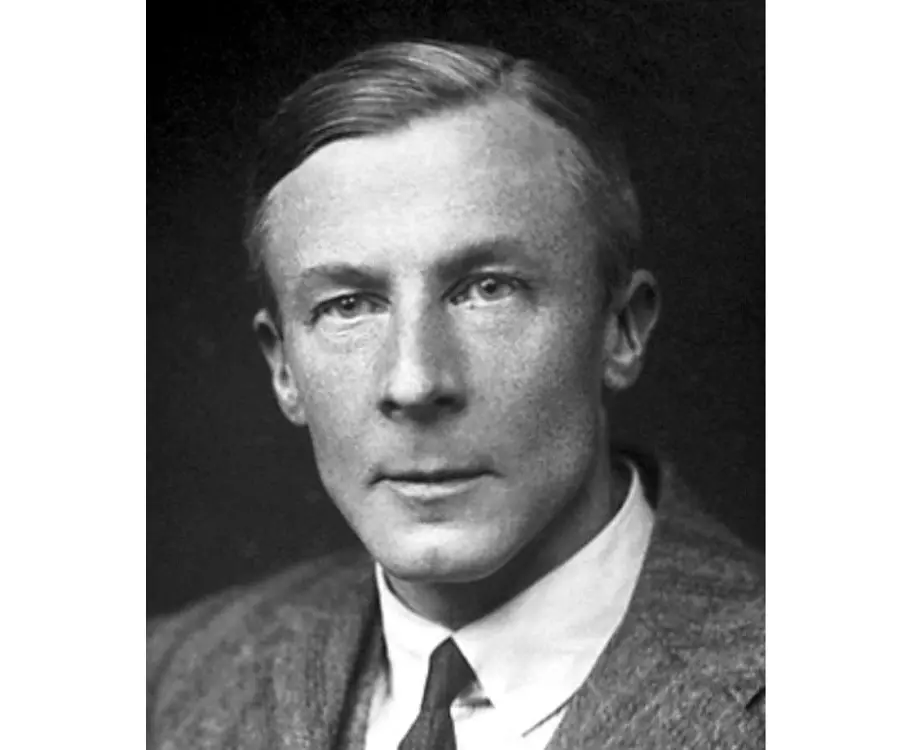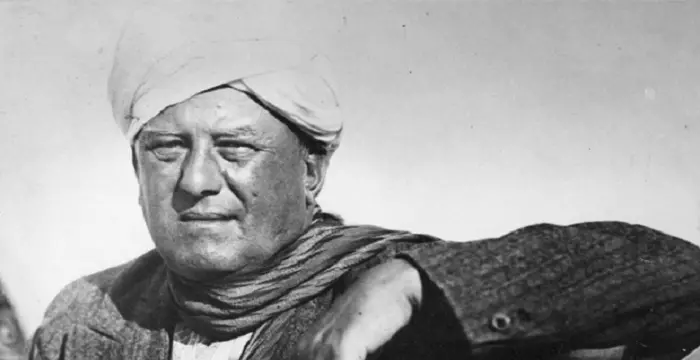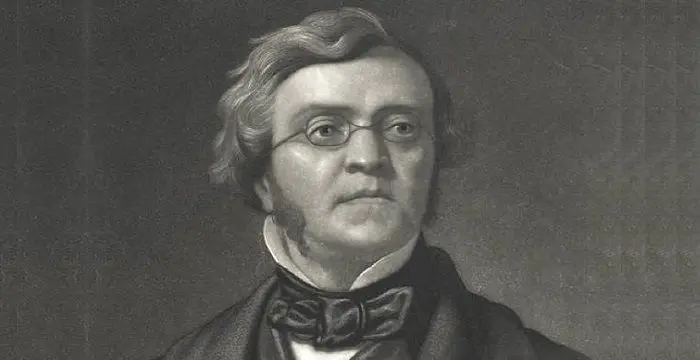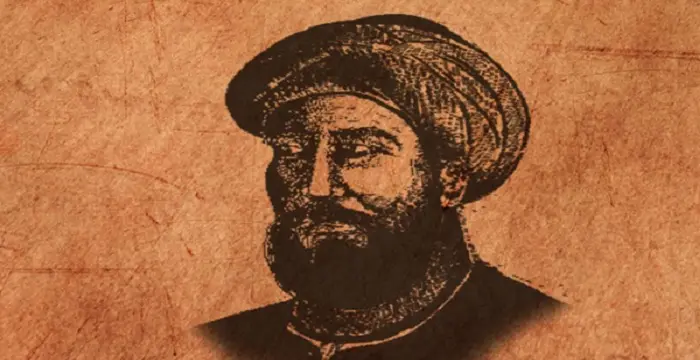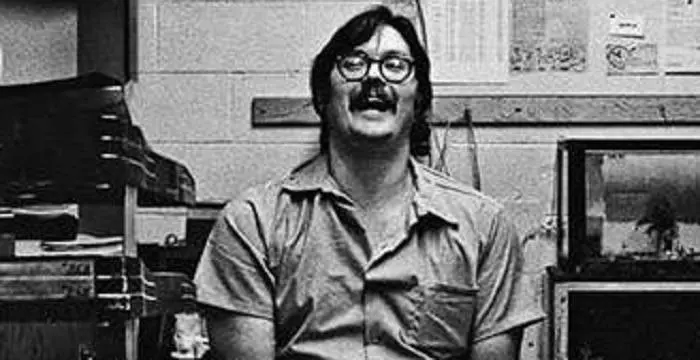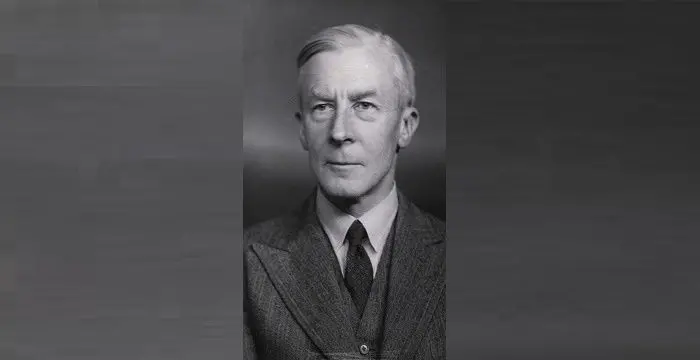
Edgar Adrian, 1st Baron Adrian - Electrophysiologist, Timeline and Personal Life
Edgar Adrian, 1st Baron Adrian's Personal Details
Edgar Adrian was an English electrophysiologist who was one of the winners of the 1932 Nobel Prize for Physiology
| Information | Detail |
|---|---|
| Birthday | November 30, 1889 |
| Died on | August 4, 1977 |
| Nationality | British |
| Famous | Trinity College, Cambridge, Physicians, Electrophysiologist |
| Spouses | Baroness Adrian, Hester Adrian |
| Childrens | Anne Adrian |
| Universities |
|
| Notable Alumnis |
|
| Birth Place | Hampstead |
| Gender | Male |
| Father | Alfred D. Adrian |
| Mother | Flora Lavinia Barton |
| Sun Sign | Sagittarius |
| Born in | Hampstead |
| Famous as | Electrophysiologist |
| Died at Age | 87 |
Edgar Adrian, 1st Baron Adrian's photo
Who is Edgar Adrian, 1st Baron Adrian?
Edgar Adrian, the First Baron Adrian, was an outstanding English electrophysiologist, who, along with Sir Charles Sherrington, jointly won the 1932 Nobel Prize for Physiology for their discoveries regarding the functions of neurons. A bright student from his childhood, he had his education first at Westminster School, London and then at Trinity College, Cambridge. While working for his graduate degree at Trinity, he came under the influence of Keith Lucas, a pioneer in neuroscience. He soon developed an interest in the subject and took up research on all-or-none law of physiology during his post graduate study. The work earned him the Fellowship of Trinity College at the age of 24. Nonetheless, he continued working for his medical degree and spent the war years working with nerve damaged or nerve disorder soldiers at St Bartholomew's Hospital, London. As the war ended, he went back to Cambridge, devoting his life to teaching and research. Apart from making significant contribution to neuroscience he also held many important positions throughout his life. He was made a member of the Order of Merit and created First Baron Adrian of Cambridge for his contribution to neurology.
// Famous Trinity College, Cambridge
Isaac Newton
Isaac Newton was an English scientist and mathematician, who discovered gravitation and Newtonian Mechanics. Read this biography to find more on his life.
Aleister Crowley
Aleister Crowley was an occultist and ceremonial magician who founded the ethical philosophy of Thelema. This biography of Aleister Crowley provides detailed information about his childhood, life, achievements, works & timeline.
William Makepeace Thackeray
William Thackeray was an English novelist and satirist. Read this brief biography to find more on his life & timeline.
Childhood & Early Life
Edgar Douglas Adrian was born on 30 November 1889 in Hampstead, London. His father, Alfred Douglas Adrian, was the legal adviser to the British Local Government Board. His mother, Flora Lavinia Barton, was the daughter of famed mathematician Charles Howard Barton. He was the third and youngest son of his parents.
In 1903, Edgar entered Westminster School, London as a King’s scholar and graduated from there in 1908. He then joined the Trinity College, Cambridge, winning a scholarship in science. At Trinity, he came under the influence of noted physiologist Keith Lucas and studied physics, chemistry, physiology, anatomy and botany for Natural Sciences Tripos.
In 1910, he passed the part I examination with First Class in all five subjects. He then took up physiology for his part II examination and received his B.A degree in 1911, again with a First Class.
Encourage by Lucas, Adrian next embarked on a research on all-or-none law of physiology. Although it was first established for contraction of heart muscle Lucas had shown that the law could be equally applicable for nerve fibers, but failed to provide any concrete evidence.
Adrian, working under Lucas, began to delve deeper into the subject. From 1912 to 1914, he published a series of papers in which he not only made a comprehensive statement on the theory, but also provided experimental evidence on the conduction of nerve impulses under different conditions.
In 1913, Adrian earned a Fellowship at Trinity College for his work on all-or-none law. He then continued to work for his medical degree. In the summer of 1914, he began his clinical training at Addenbrooke’s Hospital, Cambridge, but was soon transferred to St Bartholomew's Hospital, London.
As the Word War I set in, soldiers with nerve disorder and nerve damage were admitted at Bartholomew. Adrian continued his clinical training among them, finally earning his medical degree in 1915.
Career
Edgar Adrian spent the war years treating soldiers with nerve damage at St Bartholomew's Hospital. He was thus able to acquire firsthand knowledge about nerve related problems, which enhanced his understanding of the neurological problems.
In 1919, he returned to Cambridge as lecturer in natural science and demonstrator in the Physiological Laboratory. He also took over the laboratory of Keith Lucas, who had died in an air crash in 1916 and began to work on the nervous system.
He first started investigating how nerve and muscle fiber respond to excitation. With the help of sensitive instruments like capillary electrometer and cathode ray tubes he was able to detect and amplify signals produced by the nervous system.
Soon he was able to establish a correlation between the time course of electric charge, refractory periods and levels of acidity. He also recorded the electrical discharge of single nerve fibers under physical stimulus.
At the same time, he concentrated on improving the amplification of recording circuit. In 1921, he and his team recorded sensory nerve impulses with the help of single-stage triode amplifier with the CSI string galvanometer. Their observation proved that the all-or-none principle was also applicable to the sensory nerves.
By early 1925, he had the amplifier improved further and used it with Lucas’s capillary electrometer to record impulses in frog-leg nerve-muscle preparations. While trying to establish a stable baseline, he noted that when the muscle was allowed to hang from the frog’s knee joint it produced oscillations.
Contrarily, when the same preparation was supported on a glass plate, it produced a stable baseline. The observation was a major breakthrough in the study of electrophysiology and opened new lines of research.
By 1926, Adrian was able to isolate a single nerve spindle and establish that stimuli can only trigger electrical impulse. He found that the frequency of the impulse suggests the intensity of sensation and that the number of fibers present in the nerve in action determines its quality.
He then went on to collaborate with other scientists to investigate into many other physiological facts. For example, he worked with Rachel Eckhard Matthews to investigate into optic nerves and collaborated with Bryan Matthews to work on electrical waves in the brain’s sensory cortex.
In 1928, Adrian accidentally discovered the presence of electricity within nerve cells. In the same year, he also established that the sensory impulses passing along the nerves are initially constant in strength; but over the time, they reduce in frequency and as a result, the sensation in the brain begins to weaken.
Subsequently, Adrian began to study pain and his research led to the idea of a sensory map, called the homunculus, in the somatosensory system. Later he studied the electrical activity of the brain in humans with the help of electroencephalogram. He spent the last years of his career working on sense of smell.
His research career ended abruptly in 1958, when water leaked into his laboratory and destroyed all his equipments. At that age, he could not start afresh with new equipments. So, he stopped research works, but continued lecturing and also published series of papers on varied subjects like neurophysiology, science education and policy, and science biography.
All through his career, Adrian held many important positions. He was the Foulerton Research Professor from 1929 to 1937. Then from 1937 to 1951, he was elected as the Professor of Physiology in the University of Cambridge and was the Master of Trinity College from 1951 to 1965.
In 1967, he was appointed as the Chancellor of the University of Cambridge and successfully held that position until 1975. Concurrently, he was also the Chancellor of the University of Leicester from 1957 to 1971.
He was also elected as President of the Royal Society and held the position from 1950 to 1955. Additionally, he was the President of the Royal Society of Medicine from 1960 to 1962.
Major Works
Adrian is best remembered for his work on all-or-none law of nerves. It was first established in case of heart muscle; but later was extended to nerves by his professor, Keith Lucas. Ultimately, it was Adrian, who provided experimental evidence for such law and opened scope for further experimentations on nervous system.
Awards & Achievements
Edgar Douglas Adrian jointly sharedthe 1932 Nobel Prize in Physiology or Medicine with Sir Charles Sherrington “for their discoveries regarding the functions of neurons".
In 1934, Adrian received the Royal Medal from the Royal Society "for his work on the physiology of nerve and its application to the problems of sensation."
In 1946, he received the Copley Medal from the Royal Society “for his distinguished researches on the fundamental nature of nervous activity, and recently on the localization of certain nervous functions".
In 1953, he received the Albert Medal from the Royal Society of Art “for his outstanding contribution to neuro-physiology”.
On 11 June 1942 Adrian was awarded membership to the Order of Merit.
On 27 January 1955 he was created First Baron Adrian, of Cambridge in the County of Cambridge.
Personal Life & Legacy
Edgar Adrian married Hester Agnes Pinsent, a mental health worker of considerable repute, on n 14 June 1923. The couple had three children. The eldest child was a daughter named Anne Pinsent Adrian. In 1927, they had mixed twins; a son named Richard Hume Adrian and a daughter named Jennet Adrian.
Richard later became a well-known physiologist. After his father’s death in 1977, he inherited his father’s title and became Second Baron Adrian. As he did not have any offspring the title became extinct after his death.
Edgar Adrian spent his last years of his life in a set of corner rooms in Nevile Court at Cambridge. By 1975, his health began to deteriorate. He died on 4 August 1977 at Evelyn Nursing Home in Cambridge.
// Famous Physicians
Al-Zahrawi
Al-Zahrawi, was an illustrious medieval Arab Muslim physician and surgeon. Check out this biography to know about his childhood, family life, achievements and interesting facts about him.
Jabir Ibn Hayyan
Jabir Ibn Hayyan was a medieval era polymath. Check out this biography to know about his life, works and achievements.
Maria Montessori
Maria Montessori was a physician and educator who developed the approach of Montessori education. This biography of Maria Montessori provides detailed information about her childhood, life, achievements, works & timeline.
Edgar Adrian, 1st Baron Adrian's awards
| Year | Name | Award |
|---|---|---|
Other | ||
| 0 | 1932 - Nobel Prize in Physiology or Medicine | |
| 0 | 1946 - Copley Medal | |
| 0 | 1934 - Royal Medal | |
| 0 | 1953 - Albert Medal | |
Edgar Adrian, 1st Baron Adrian biography timelines
- // 30th Nov 1889Edgar Douglas Adrian was born on 30 November 1889 in Hampstead, London. His father, Alfred Douglas Adrian, was the legal adviser to the British Local Government Board. His mother, Flora Lavinia Barton, was the daughter of famed mathematician Charles Howard Barton. He was the third and youngest son of his parents.
- // 1903 To 1908In 1903, Edgar entered Westminster School, London as a King’s scholar and graduated from there in 1908. He then joined the Trinity College, Cambridge, winning a scholarship in science. At Trinity, he came under the influence of noted physiologist Keith Lucas and studied physics, chemistry, physiology, anatomy and botany for Natural Sciences Tripos.
- // 1910 To 1911In 1910, he passed the part I examination with First Class in all five subjects. He then took up physiology for his part II examination and received his B.A degree in 1911, again with a First Class.
- // 1912 To 1914Adrian, working under Lucas, began to delve deeper into the subject. From 1912 to 1914, he published a series of papers in which he not only made a comprehensive statement on the theory, but also provided experimental evidence on the conduction of nerve impulses under different conditions.
- // 1913 To 1914In 1913, Adrian earned a Fellowship at Trinity College for his work on all-or-none law. He then continued to work for his medical degree. In the summer of 1914, he began his clinical training at Addenbrooke’s Hospital, Cambridge, but was soon transferred to St Bartholomew's Hospital, London.
- // 1915As the Word War I set in, soldiers with nerve disorder and nerve damage were admitted at Bartholomew. Adrian continued his clinical training among them, finally earning his medical degree in 1915.
- // 1916 To 1919In 1919, he returned to Cambridge as lecturer in natural science and demonstrator in the Physiological Laboratory. He also took over the laboratory of Keith Lucas, who had died in an air crash in 1916 and began to work on the nervous system.
- // 1921At the same time, he concentrated on improving the amplification of recording circuit. In 1921, he and his team recorded sensory nerve impulses with the help of single-stage triode amplifier with the CSI string galvanometer. Their observation proved that the all-or-none principle was also applicable to the sensory nerves.
- // 14th Jun 1923 To 1927Edgar Adrian married Hester Agnes Pinsent, a mental health worker of considerable repute, on n 14 June 1923. The couple had three children. The eldest child was a daughter named Anne Pinsent Adrian. In 1927, they had mixed twins; a son named Richard Hume Adrian and a daughter named Jennet Adrian.
- // 1925By early 1925, he had the amplifier improved further and used it with Lucas’s capillary electrometer to record impulses in frog-leg nerve-muscle preparations. While trying to establish a stable baseline, he noted that when the muscle was allowed to hang from the frog’s knee joint it produced oscillations.
- // 1926By 1926, Adrian was able to isolate a single nerve spindle and establish that stimuli can only trigger electrical impulse. He found that the frequency of the impulse suggests the intensity of sensation and that the number of fibers present in the nerve in action determines its quality.
- // 1928In 1928, Adrian accidentally discovered the presence of electricity within nerve cells. In the same year, he also established that the sensory impulses passing along the nerves are initially constant in strength; but over the time, they reduce in frequency and as a result, the sensation in the brain begins to weaken.
- // 1932Edgar Douglas Adrian jointly sharedthe 1932 Nobel Prize in Physiology or Medicine with Sir Charles Sherrington “for their discoveries regarding the functions of neurons".
- // 1934In 1934, Adrian received the Royal Medal from the Royal Society "for his work on the physiology of nerve and its application to the problems of sensation."
- // 11th Jun 1942On 11 June 1942 Adrian was awarded membership to the Order of Merit.
- // 1946In 1946, he received the Copley Medal from the Royal Society “for his distinguished researches on the fundamental nature of nervous activity, and recently on the localization of certain nervous functions".
- // 1953In 1953, he received the Albert Medal from the Royal Society of Art “for his outstanding contribution to neuro-physiology”.
- // 27th Jan 1955On 27 January 1955 he was created First Baron Adrian, of Cambridge in the County of Cambridge.
- // 1958His research career ended abruptly in 1958, when water leaked into his laboratory and destroyed all his equipments. At that age, he could not start afresh with new equipments. So, he stopped research works, but continued lecturing and also published series of papers on varied subjects like neurophysiology, science education and policy, and science biography.
- // 1975 To 4th Aug 1977Edgar Adrian spent his last years of his life in a set of corner rooms in Nevile Court at Cambridge. By 1975, his health began to deteriorate. He died on 4 August 1977 at Evelyn Nursing Home in Cambridge.
- // 1977Richard later became a well-known physiologist. After his father’s death in 1977, he inherited his father’s title and became Second Baron Adrian. As he did not have any offspring the title became extinct after his death.
// Famous Sagittarius Celebrities peoples
Billie Eilish
Billie Eilish Pirate Baird O’Connell is an American singer and songwriter. Check out this biography to know about her childhood, family, personal life, birthday, etc.
Jacelyn Reeves
Jacelyn Reeves is a former flight attendant who once had a fling with Clint Eastwood. Check out this biography to know about her birthday, childhood, family life, achievements and fun facts about her.
Edmund Kemper
Edmund Kemper is a convicted serial killer from America who murdered ten people. Check out this biography to know about his childhood, life, crimes and other facts about him.
Pietro Boselli
Pietro Boselli is an Italian model, engineer, teacher, and fitness athlete who became famous as the ‘world’s sexiest math teacher’. Check out this biography to know about his birthday, childhood, family life, achievements and fun facts about him.
Niqoles Heard
Lil Niqo is an American rapper and musical artist. Let’s take a look at his family and personal life including age, date of birth, net worth, girlfriends, and fun facts.
Ted Nugent
Ted Nugent is a hard rock musician known for his hits ‘Stranglehold’ and ‘Cat Scratch Fever’. This biography of Ted Nugent provides detailed information about his childhood, life, achievements, works & timeline.
Edgar Adrian, 1st Baron Adrian's FAQ
What is Edgar Adrian, 1st Baron Adrian birthday?
Edgar Adrian, 1st Baron Adrian was born at 1889-11-30
When was Edgar Adrian, 1st Baron Adrian died?
Edgar Adrian, 1st Baron Adrian was died at 1977-08-04
Where was Edgar Adrian, 1st Baron Adrian died?
Edgar Adrian, 1st Baron Adrian was died in Cambridge
Which age was Edgar Adrian, 1st Baron Adrian died?
Edgar Adrian, 1st Baron Adrian was died at age 87
Where is Edgar Adrian, 1st Baron Adrian's birth place?
Edgar Adrian, 1st Baron Adrian was born in Hampstead
What is Edgar Adrian, 1st Baron Adrian nationalities?
Edgar Adrian, 1st Baron Adrian's nationalities is British
Who is Edgar Adrian, 1st Baron Adrian spouses?
Edgar Adrian, 1st Baron Adrian's spouses is Baroness Adrian, Hester Adrian
Who is Edgar Adrian, 1st Baron Adrian childrens?
Edgar Adrian, 1st Baron Adrian's childrens is Anne Adrian
What was Edgar Adrian, 1st Baron Adrian universities?
Edgar Adrian, 1st Baron Adrian studied at Trinity College, Cambridge, Trinity College, Cambridge, University of Cambridge, Westminster School
What was Edgar Adrian, 1st Baron Adrian notable alumnis?
Edgar Adrian, 1st Baron Adrian's notable alumnis is Trinity College, Cambridge
Who is Edgar Adrian, 1st Baron Adrian's father?
Edgar Adrian, 1st Baron Adrian's father is Alfred D. Adrian
Who is Edgar Adrian, 1st Baron Adrian's mother?
Edgar Adrian, 1st Baron Adrian's mother is Flora Lavinia Barton
What is Edgar Adrian, 1st Baron Adrian's sun sign?
Edgar Adrian, 1st Baron Adrian is Sagittarius
How famous is Edgar Adrian, 1st Baron Adrian?
Edgar Adrian, 1st Baron Adrian is famouse as Electrophysiologist

